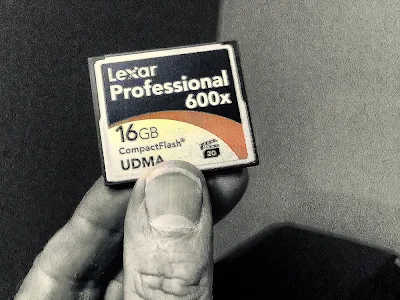For all memory cards, there is a limit to how many times files can be written and erased. Memory card experts recommend these best practices that can prolong
the life of a card.
Date Your Memory Cards
Memory cards have a limited life span. Expect a heavily used card to last about six years. A seldom used card can function about ten years. By tracking the card’s in service date, you
can replace the card before it goes bad.
Er ase Pictures by
Formatting the Card in the Camera
Formatting is less wear and tear than individual file
deletion because only writes to the file allocation table. If you let image import programs like Lightroom delete files after transfer, the individual file deletion shortens card life because the of the .
Don’t Completely Fill a Card
Because most camera file formats, including RAW, have some
compression and therefore size variability based on subject matter, even the best cameras
can’t predict exactly how many shots will fit on a card. One shot too many with a full buffer can
write over the card headers and make it unreadable. To avoid problems, the general
recommendation is to swap out cards when the camera shows 10-15 shots remaining.
Switch Camera Off Before Inserting or Removing a Card
This is in every camera manual, but it bears repeating. Make
sure the file writing L.E.D. is not lit or blinking and turn you camera off before ejecting the memory card. Turning the camera
off flushes the file writing buffer. If a card is ejected mid file transfer, the file system can be damaged. It also cuts off current to the card, which avoids a possible card killing voltage spike
as the card ejects. The same care applies to card readers. Make sure you
explicitly eject the card before removing it.
Rotate Your Cards
Most of us have a number of cards. Rotating the cards spreads out the wear. This tip applies to camera batteries, too.
Avoid Static Charges When Handling Memory Cards
Try to ground yourself before touching a card.
Avoid Environmental Extremes
Cameras and cards are rated for certain max and min
temperatures operating ranges, which should be observed. Powerful magnetic sources and
x-rays can damage cards. If you’re traveling, the walk-through machines probably OK, but the
stronger x-rays used to examine checked baggage can ruin a card.
Keep an Eye on the Camera Battery
If a camera battery voltage drops below specification or the battery goes dead with files still in the buffer, card corruption is likely. Two bars, or 25% left, is time to change batteries if possible.
Avoid Editing and Deleting Images with Your Camera
This is known to cause problems, especially with SD cards, probably because they don’t have a controller on board like CF cards.
Perform Low Level Format Every 3-6 Months
Lexar and Sandisk recommend you use a tool like Lexar Image Rescue to low level
format cards a few times a year. The low level format returns the card to factory condition. More important, it can identify and block writing to dead areas on the card. Lexar claims this practice extends
the life of memory cards by as much as 25%.
Two Cards Are Better Than One
For important shoots, if your camera supports the setting, consider having your camera write to
two cards simultaneously.
Watch for Firmware Updates
Camera and external card reader makers issue firmware updates on occasion. to fix stability problems, so it is a good idea to stay current.


No comments:
Post a Comment